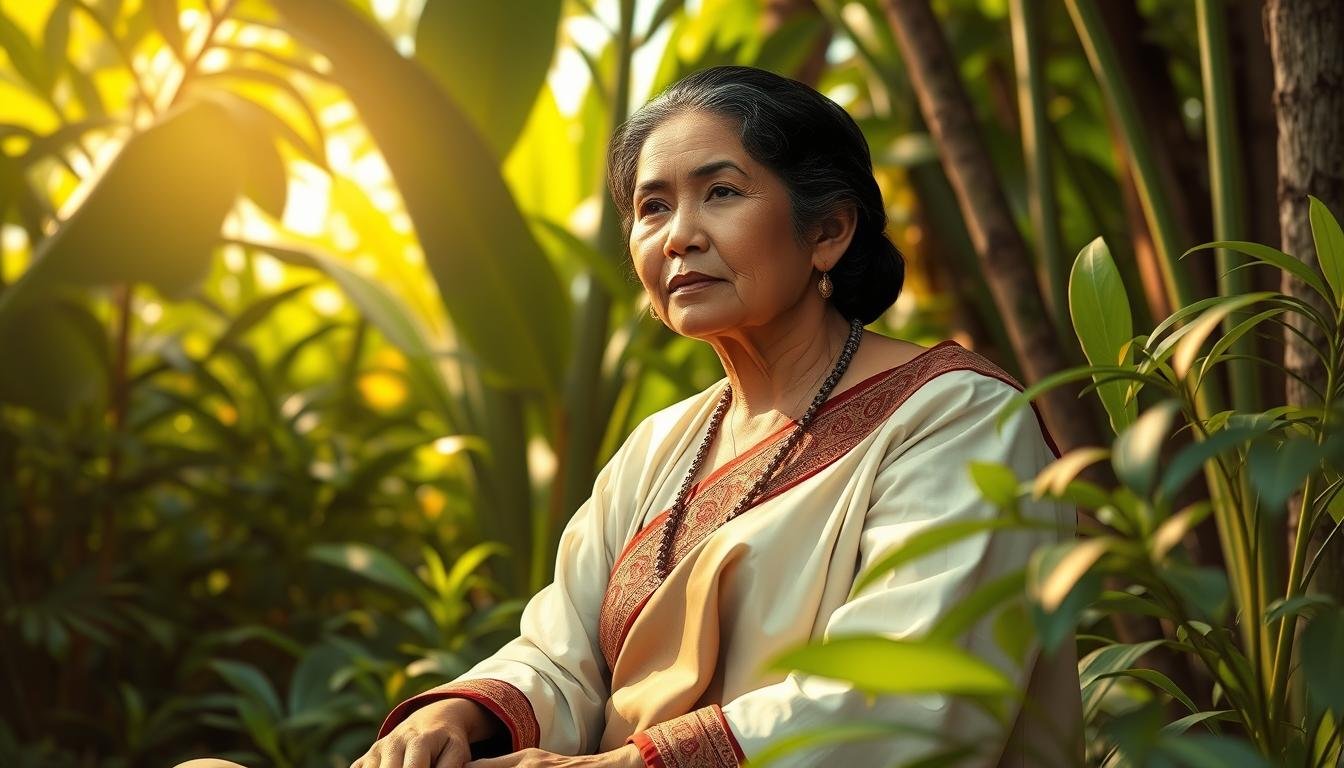In the rich tapestry of Philippine history, few figures stand out as prominently as Doña Maria Uray. Her contributions to the spread of Christianity in the Visayas and Mindanao remain a cornerstone of the region’s cultural and spiritual heritage. Yet, her story often goes untold, overshadowed by larger narratives of colonial missions.
Born into a prominent family in Dapitan, Doña Maria Uray was among the first to embrace Christianity during the early Spanish missions. Her baptism, alongside her family, marked a pivotal moment in the Christianization of the Philippines. This event not only solidified her place in history but also set the stage for the broader acceptance of the faith in the region.
Her legacy is deeply intertwined with the Dapitan community, where her influence extended beyond her lifetime. As a person of faith and leadership, she played a crucial role in shaping the spiritual landscape of the Visayas and Mindanao. Her story is a testament to the enduring impact of individuals in the annals of history.
Key Takeaways
- Doña Maria Uray was a key figure in spreading Christianity in the Visayas and Mindanao.
- Her baptism marked a significant moment in the Christianization of the Philippines.
- She was part of a prominent family in Dapitan, which played a vital role in local history.
- Her legacy continues to influence the spiritual and cultural heritage of the region.
- Her story highlights the importance of individuals in shaping historical narratives.
Historical Context of Christianity in the Visayas and Mindanao
The spread of Christianity in the Visayas and Mindanao began with the arrival of Spanish missions in the 16th century. These missions aimed to convert local communities and establish a foothold for the Catholic Church in the Philippines. Early efforts were led by Jesuit and Augustinian missionaries, who faced both resistance and acceptance from indigenous leaders.
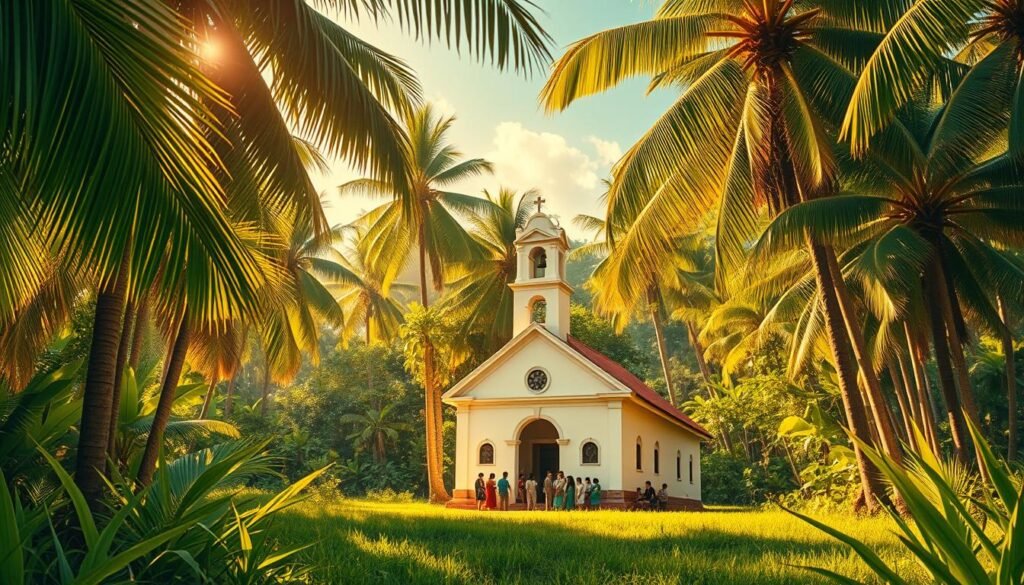
Arrival of Spanish Missions and Early Converts
One of the key figures in this history was Pedro, a local leader who played a crucial role in bridging the gap between Spanish missionaries and his community. His efforts, alongside those of other early converts, helped pave the way for widespread acceptance of Christianity. The Spanish missions also benefited from the support of influential persons like Pedro Manook, whose leadership was instrumental in the early period of evangelization.
During this time, conflicts often arose between Spanish forces and local sultanates. These wars shaped the area‘s religious and political landscape. Despite these challenges, the missionaries persevered, establishing churches and converting entire barangays. The cathedral in Dapitan stands as a testament to these early efforts.
Transition from Oral Traditions to Documented History
Initially, much of the history of these missions was passed down through oral traditions. Over time, these stories were documented, providing a more comprehensive account of the Christianization process. This shift allowed for a deeper understanding of the Philippines‘ spiritual transformation.
The role of fathers like Francisco de Ortega was pivotal in this transition. Their detailed records offer valuable insights into the challenges and successes of the early missions. Today, these documents serve as a bridge between the past and present, highlighting the enduring impact of Christianity in the region.
| Key Figure | Role | Contribution |
|---|---|---|
| Pedro | Local Leader | Facilitated early conversions |
| Pedro Manook | Military Leader | Supported Spanish missions |
| Francisco de Ortega | Missionary | Documented early efforts |
These historical processes laid the groundwork for the cultural and spiritual narratives that continue to shape the Visayas and Mindanao today.
The Story of Doña Maria Uray and Her Impact on Local Faith
The story of Doña Maria Uray is a remarkable chapter in the history of the Philippines. Her life in Dapitan was marked by significant spiritual milestones that shaped her journey and the faith of her community. As the daughter of influential converts, her baptism under the Spanish mission was a turning point in the Christianization of the region.
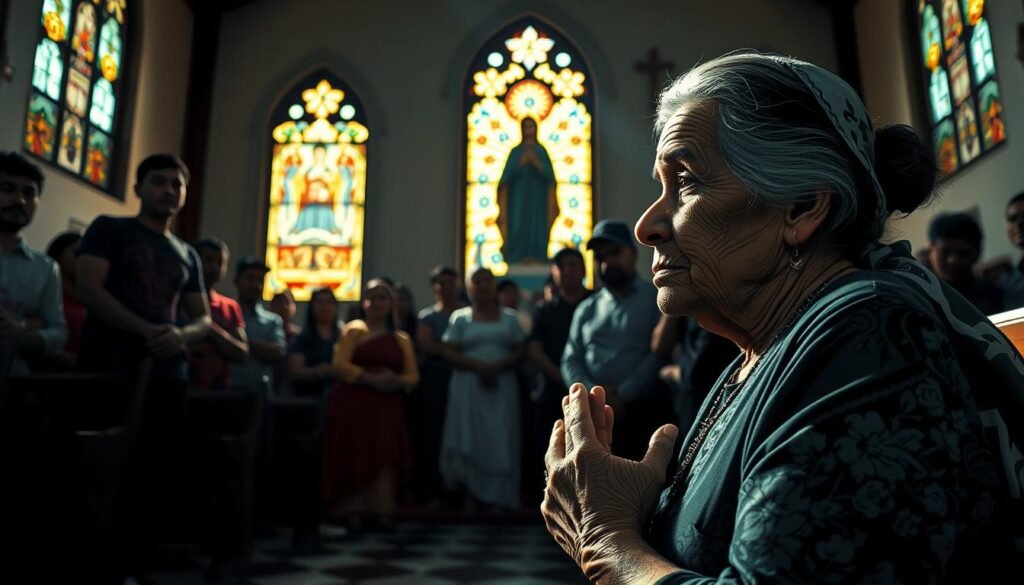
Early Life in Dapitan and Conversion Milestones
Born into a prominent family in Dapitan, her early life was deeply rooted in the traditions of her community. Her family’s conversion to Christianity was a pivotal moment, setting the stage for her own spiritual transformation. She was baptized alongside her family, becoming part of the early wave of converts under the Spanish mission.
Her connection to notable figures like Pedro and Manook underscored her family’s heritage. These relationships played a crucial role in her ability to influence others. Even during periods of war, her steadfast faith inspired many to embrace Christianity.
Role in the Evangelization Efforts
Her active participation in evangelization efforts left a lasting impact on Mindanao and the Visayas. She worked tirelessly to spread the faith, often collaborating with missionaries like Francisco. Her efforts were instrumental in converting entire communities, even in the face of resistance.
Over time, her persona became a legend, passed down through local oral traditions. Her story continues to inspire, highlighting the power of faith and perseverance. Her legacy is a testament to the enduring influence of individuals in shaping the spiritual landscape of the Philippines.
| Key Figure | Role | Contribution |
|---|---|---|
| Pedro | Local Leader | Supported early conversions |
| Manook | Military Leader | Facilitated evangelization efforts |
| Francisco | Missionary | Collaborated in spreading Christianity |
Her story is not just a personal journey but a reflection of the broader narrative of faith in the region. Through her life, we see the transformative power of belief and the enduring legacy of those who dedicate themselves to a cause greater than themselves.
Doña Maria Uray: Family Legacy from Pedro Manook Onward
Pedro Manook’s leadership laid the foundation for a family legacy that shaped Philippine history. His military prowess and political influence were instrumental in the early years of Spanish colonization. This legacy continued through generations, culminating in the remarkable contributions of his daughter, Doña Maria Uray.
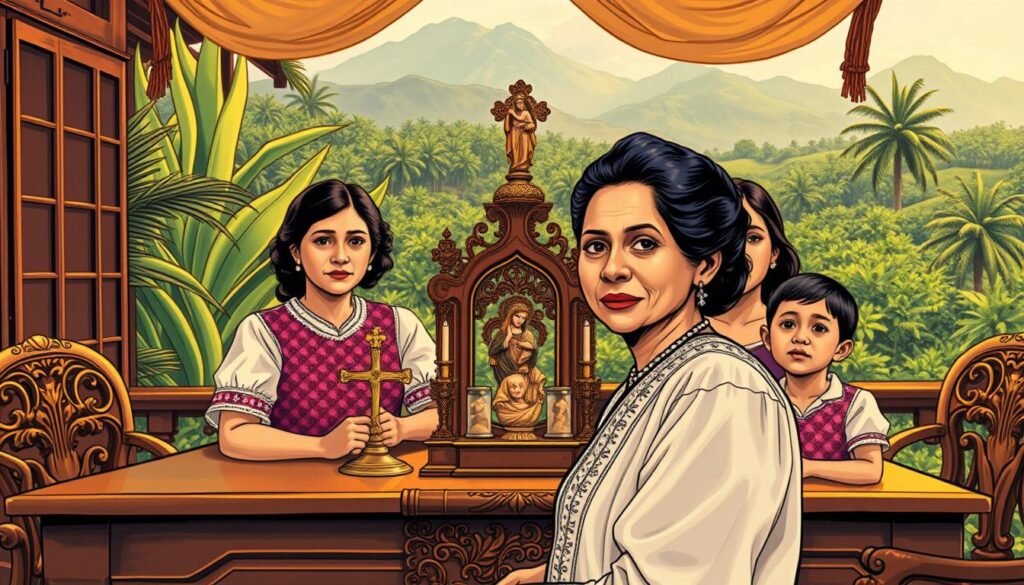
Pedro Manook’s Leadership and Military Prowess
Pedro Manook was a key figure in the Spanish missions, known for his strategic leadership and military achievements. During his term, he played a crucial role in securing alliances between Spanish forces and local communities. His efforts not only strengthened Spanish influence but also paved the way for the spread of Christianity in Mindanao.
Historical accounts highlight his ability to navigate complex political landscapes. His leadership during conflicts earned him respect from both Spanish authorities and local leaders. This dual influence allowed him to bridge cultural divides, fostering a period of relative stability.
Intergenerational Contributions to Philippine History
The legacy of Pedro Manook extended beyond his lifetime, shaping the lives of his descendants. His daughter, Doña Maria Uray, inherited his leadership qualities and commitment to faith. She became a pivotal figure in the Christianization of the Visayas and Mindanao, continuing her father’s work.
Over the years, the family’s contributions became the stuff of legend. Their story combines factual history with oral traditions, creating a rich narrative that endures to this day. Early records provide valuable insights into their intergenerational impact, documenting their role in shaping the region’s cultural and spiritual identity.
“The Manook family’s legacy is a testament to the enduring power of leadership and faith in shaping history.”
From Pedro Manook’s military feats to Doña Maria Uray’s spiritual influence, their family’s story is a cornerstone of Philippine history. Their contributions continue to inspire, reminding us of the profound impact individuals can have on their communities.
Historical Landmarks and Church Influences in Dapitan
The roots of Dapitan’s spiritual identity run deep, shaped by centuries of faith and community. From its founding in 1631, the Dapitan Parish has been a cornerstone of local life, evolving alongside the people it serves. Its history is a testament to the enduring influence of religion in shaping the cultural and social fabric of the Philippines.
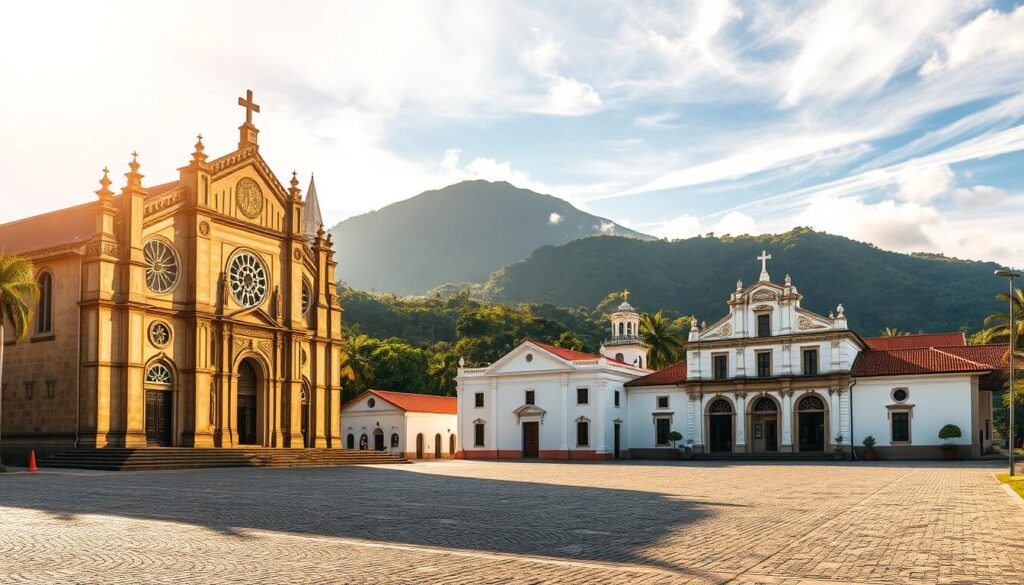
The Founding and Evolution of Dapitan Parish
The Dapitan Parish was established during a transformative period in the region’s history. Jesuit missionaries laid its foundation, aiming to spread Christianity across Mindanao. Over the centuries, the parish underwent significant changes, reflecting shifts in religious and community life.
Key figures like Rev. Fr. Francisco played pivotal roles in its development. Their leadership ensured the parish remained a spiritual hub for local inhabitants. The parish’s growth mirrored the expansion of the surrounding barangays, fostering a sense of unity and shared purpose.
Architectural and Cultural Significance of Local Churches
The churches of Dapitan are more than just buildings; they are cultural landmarks. Their architecture reflects a blend of Spanish colonial and indigenous styles, symbolizing the fusion of traditions. These structures have stood the test of time, serving as gathering places for worship and community events.
Local inhabitants have played a crucial role in preserving these buildings. Through community initiatives, they have ensured that the churches remain vibrant centers of faith and culture. Their efforts highlight the deep connection between the people of Dapitan and their religious heritage.
“The churches of Dapitan are not just places of worship; they are living testaments to the resilience and faith of its people.”
| Key Feature | Description | Impact |
|---|---|---|
| Jesuit Influence | Founded the parish in 1631 | Established early Christian roots |
| Architectural Style | Blend of Spanish and indigenous designs | Symbolizes cultural fusion |
| Community Role | Preservation through local initiatives | Ensures continuity of heritage |
The story of Dapitan’s parish is a reflection of the broader historical narrative of Mindanao and the Philippines. Its evolution underscores the enduring impact of faith and community in shaping the region’s identity. For more insights into the historical context of early Christianity in the Philippines, explore this detailed account.
Cultural Narratives and Oral Traditions in Philippine History
Cultural narratives and oral traditions have long served as the backbone of Philippine history, weaving together stories of faith, resistance, and identity. These stories, passed down through generations, provide a rich tapestry that complements archival records. They offer unique insights into the lives of inhabitants and the buildings of their communities.
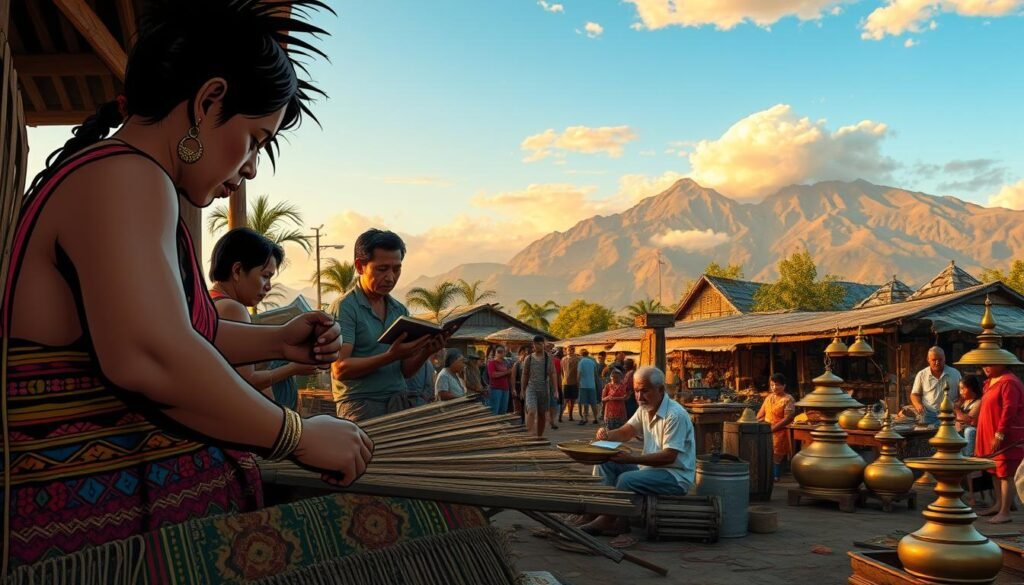
In the Philippines, oral traditions often serve as the first layer of historical memory. They capture the essence of events that may not have been documented in official records. These narratives, when linked to documented events, create a fuller picture of the past.
Linking Folk Stories to Documented Events
Folk stories are not just tales; they are reflections of real events. For example, the story of the Golden Image of Agusan highlights the region’s historical ties to ancient Asian civilizations. Such narratives, when paired with archaeological evidence, provide a deeper understanding of the Philippine past.
Local historians like Fr. Francisco played a crucial role in bridging these gaps. Their detailed records help synchronize oral and written histories, ensuring that cultural narratives remain accurate and relevant.
Insights from Archival Evidence and Local Historiography
Archival evidence offers a structured view of history, but it often lacks the emotional depth of oral traditions. By combining both, we gain a more comprehensive understanding. For instance, the year 1595 marked a significant turning point in the history of Dapitan, as documented in both written records and local stories.
These accounts highlight the resilience of inhabitants and their ability to preserve their heritage. The buildings they constructed, such as churches and community centers, stand as testaments to their enduring spirit.
The Role of Oral Traditions in Shaping Collective Memory
Oral traditions are more than just stories; they are the foundation of collective memory. They ensure that the lessons of the past are not forgotten. For example, the narratives of the babaylanes (shaman priestesses) reveal the resistance of indigenous women to colonial conversion efforts.
These traditions continue to inspire, reminding us of the power of storytelling in preserving cultural identity. As explored in this detailed account, the Hindu-Buddhist cultural influences in the Caraga region further underscore the importance of oral narratives in understanding Philippine history.
| Key Element | Role | Impact |
|---|---|---|
| Folk Stories | Reflect real events | Complement archival records |
| Archival Evidence | Provide structured data | Enhance historical accuracy |
| Oral Traditions | Preserve collective memory | Ensure cultural continuity |
Cultural narratives remain vital to the collective memory of the Philippines. They remind us that history is not just about dates and events but about the people who lived through them. Through these stories, we gain a deeper appreciation of our shared heritage.
Conclusion
The legacy of early Christian missions in the Philippines continues to shape the spiritual and cultural identity of the Visayas and Mindanao. From the arrival of Spanish missions to the enduring influence of key figures, this history reflects a journey of faith and resilience. The family’s contributions, spanning generations, highlight the transformative power of leadership and belief.
Over the years, this account has been marked by periods of war and change. Yet, the collective way of life has been enriched by these narratives. The cathedral in Dapitan stands as a testament to this enduring legacy, symbolizing the fusion of faith and community.
Figures like Fr. Francisco played pivotal roles in documenting this period. Their efforts ensure that the stories of individuals continue to inspire and educate. As explored in this detailed account, the themes of faith and perseverance remain central to understanding the region’s history.
Today, the unbroken legacy of these early missions offers hope for a more humane future. Under the patronage of St. James the Greater, the spiritual and cultural heritage of Mindanao continues to thrive, reminding us of the enduring power of faith.
FAQ
Who was Doña Maria Uray?
She was a key figure in the spread of Christianity in the Visayas and Mindanao during the Spanish colonial period, known for her conversion and evangelization efforts.
What role did Pedro Manook play in Philippine history?
Pedro Manook, a descendant of Doña Maria Uray, was a prominent leader known for his military skills and contributions to the region’s historical development.
How did Spanish missions influence the Visayas and Mindanao?
Spanish missions introduced Christianity, transitioning local communities from oral traditions to documented religious practices and cultural changes.
What is the significance of Dapitan in Philippine history?
Dapitan is a historic area where early Christianization efforts took place, marked by the founding of its parish and the influence of local churches.
How did oral traditions shape Philippine history?
Oral traditions preserved folk stories and cultural narratives, linking them to documented events and shaping collective memory in the region.
What are some notable landmarks in Dapitan?
The Dapitan Parish and other local churches stand as architectural and cultural symbols of the area’s rich historical and religious heritage.
How did Doña Maria Uray’s family contribute to Philippine history?
Her family, starting with Pedro Manook, played significant roles in leadership, military endeavors, and the preservation of local history across generations.
Source Links
- Insurgents: Constructing the Moro gender order in Mindanao conflict and migration
- Waray Literary Text – PDFCOFFEE.COM
- No title found
- Dapitan Kingdom
- MINDANAO’S FIRST CHRISTIAN CENTURY
- 5 Spirit of Ninay 12-16-2010.indd
- PHILIPPINE RELIGION: A Curious Thing Happened on the Way to Christianization • THE ASWANG PROJECT
- Full text of "The Philippine Islands, 1493-1898
- Listahan Ng Mga Akdang Pampanitikan – PDFCOFFEE.COM
- explorations by early navigators, descriptions of the islands and their peoples, their history and records of the catholic missions, as related in contemporaneous books and manuscripts, showing the political, economic, commercial and religious conditions of those islands from their earliest

